Tips and Tricks
How to Photograph in Fog
Ever tried capturing the eeriness of a foggy landscape? You’ll know it’s trickier than it looks to recreate what your eyes can see in all its atmospheric glory. Take a look at these fog photography tips to help you capture shots that are more exciting than flat.
Planning your fog photography
You’ve got to seek out the fog, you can’t just wait for it to come to you. Planning is one of the biggest challenges and takes a great deal of perseverance. Don’t be put out if it takes longer to find the mist than you’d like – after all, you can’t do anything about the weather.
Make sure to check weather forecasts regularly: especially for early mornings and night fog photography. Fog forms when cold air passes over warmer water or moist land and is most likely to be found around sunrise or sunset. Just be prepared to set early morning alarms to make the most of it!
Camera settings for fog
Once you’ve found the mist, make sure your camera is set up properly for the types of photos you want to take.
Exposure
Getting the right exposure levels is one of the most difficult aspects of fog photography. If you’ve taken photos of sandy beaches or snow, you’ll know just how tricky this can be to get right. If your exposure is too low, this can make the mist look too dark, causing the photograph to be too grey. So try overexposing the shot to help make the fog lighter. As the sun starts to rise, keep an eye on the exposure, and adjust it regularly to accommodate the increasing light.
Focus
If you want to capture the fog, it’s best to work with manual focus. Auto-focus works by detecting the differences in contrast, but there is little to no contrast in foggy conditions. Combining this with low light levels will make it even more difficult for your camera to focus on anything. Instead, choose your focal point and adjust your lens by hand. For example, you could focus on a tree that’s surrounded by the fog, or perhaps use a foreground focal point such as a fence, person or other subject close to the camera. Why not experiment with different levels of focus, and preserve all the differences in a premium CEWE PHOTOBOOK or a personalised photo calendar to display a new image on your wall every month?
Shutter speed
It’s vital to keep your camera steady when you’re taking pictures in fog. It’s texture and dispersal can vary massively, which is a great opportunity to take photographs with a wide variety of effects and moods. The best way to capture these differences is with shutter speed. A quicker shutter speed prevents the texture from becoming too smooth, perfect for taking pictures when the haze is almost cloud like. Use a longer shutter speed if you want the haze to look like one long, thick continuous patch.
Lenses
Using a wide angled lens is one of the best ways to capture photos of the fog. Wide, misty landscapes look stunning, and if you’re lucky, you’ll be able to capture the start and end of a hazy patch.
Top tip: Out and about in the fog? You’ll find much higher levels of condensation. Watch out for small droplets of water getting into your lens. Make sure to bring a lens cloth with you, so the droplets don’t end up ruining your photos.
Fog photography inspiration
Looking to capture the perfect shot? Here’s some inspiration to turn your foggy landscape photography into something really special:
Silhouettes: Fog does a great job of emphasising shapes in photos. Textures and contrasts are reduced, leaving your subject as a single dark colour.
Black and white fog photography: We recommend shooting in colour, and turning the photos into black and white later. It’s a perfect way to add atmosphere.
Light rays: If there’s a light source, fog can make it much more concentrated. Try taking photos of light rays through a group of trees.
Fog photography tips: Treating
For a lot of photographers, brushing up photos using editing software is par for the course. Maximising the contrast is common, but avoid it for photos of misty conditions! Adjusting the contrast means your photos will lose their soft lighting.
Getting the perfect shot takes a great deal of patience and practice. With the tips above, you’ll know how to photograph in fog like a pro. Looking for a way to preserve your moody, atmospheric photos? Wall Art is a perfect way to display your best images.







